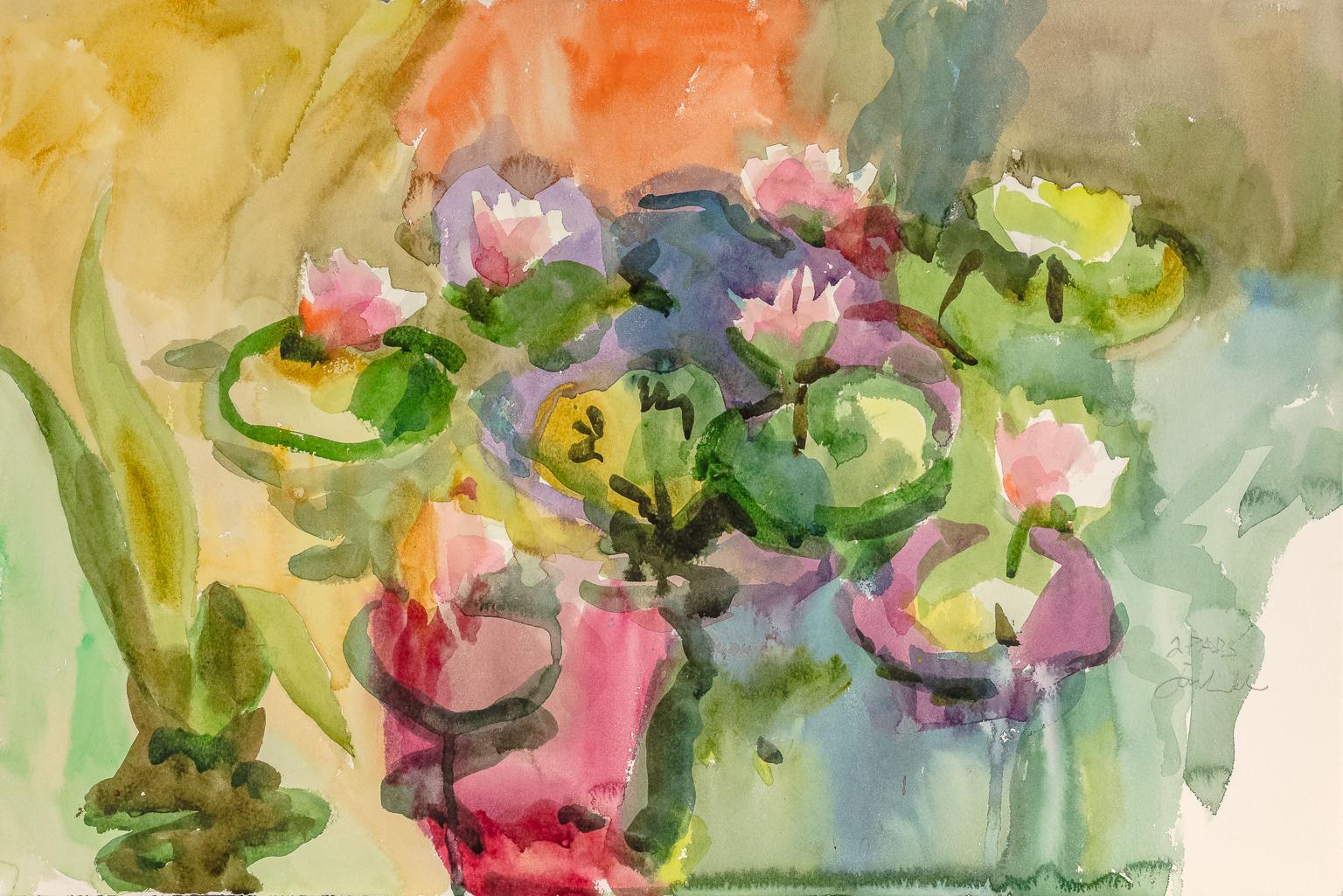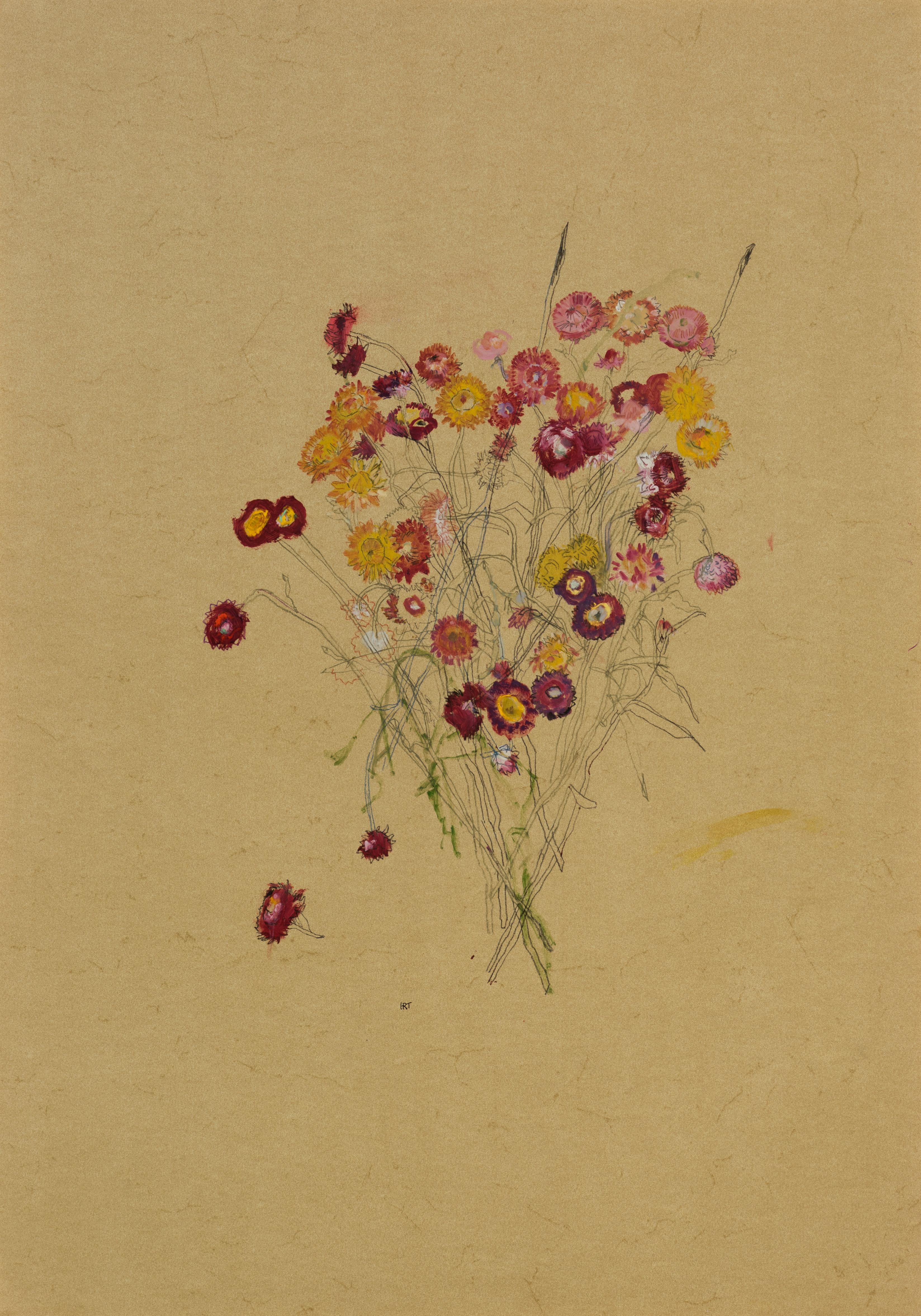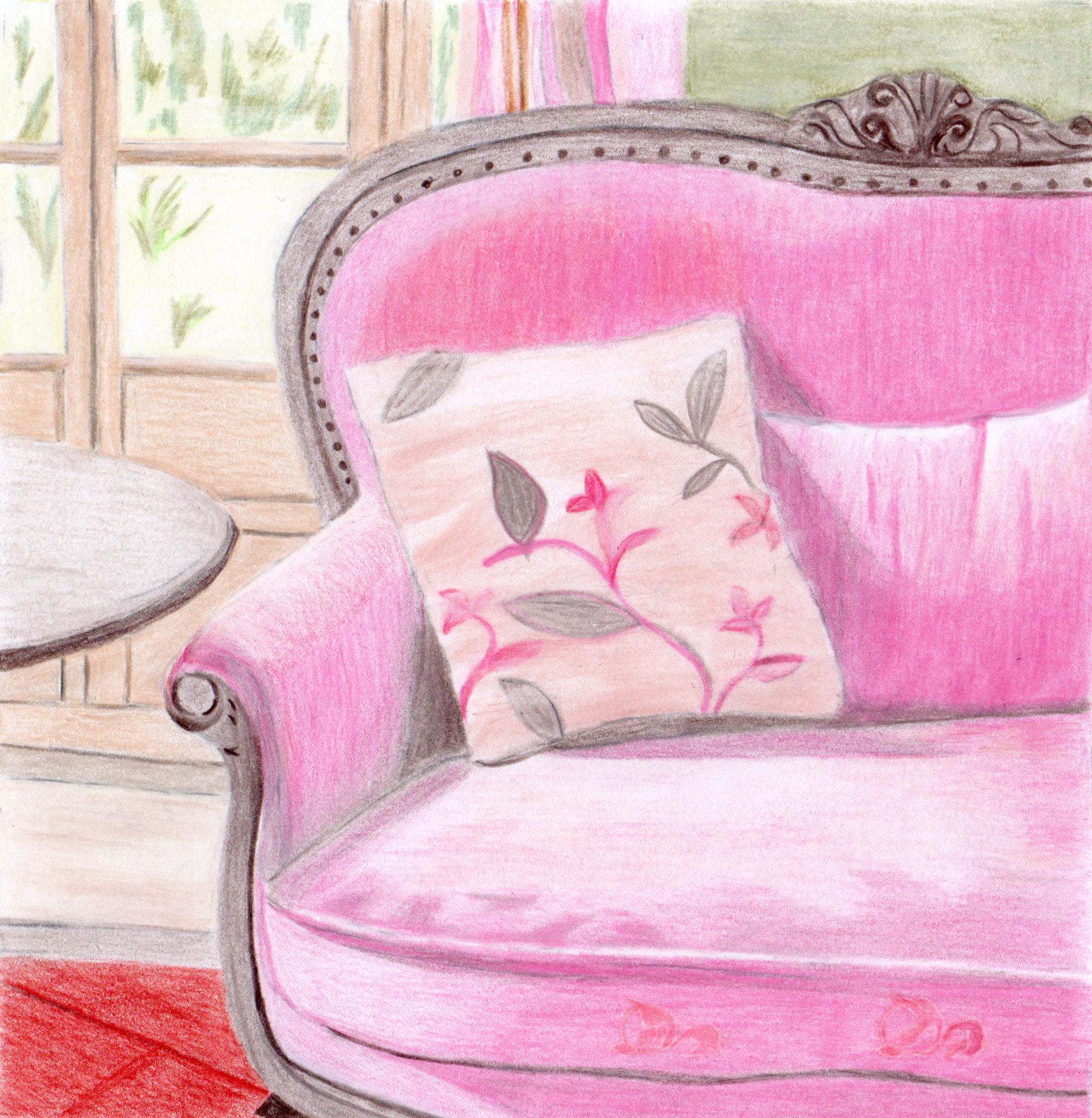Items Similar to Homage to Morandi
Want more images or videos?
Request additional images or videos from the seller
1 of 7
Phyllis SloaneHomage to Morandic. 1990
c. 1990
About the Item
Homage to Morandi
Watercolor, c. 1990
Signed lower right: Sloane
An important exhibition size watercolor by the artist.
Acquired by the Cleveland Clinic, de-accessed in 2021
Condition: Excellent
Archival framing by the Cleveland Clinic Art Collection
Image/Sight: 24 x 38 inches
Frame size: 39 1/2 x 55 inches
Phyllis Sloane earned her BFA from Carnegie Institute of Technology in Industrial Design. The abstract expressionist movement in the 1950s heavily influenced Sloane’s work early in her career. Like her Carnegie Tech classmate and friend Roy Lichtenstein, she gravitated towards more representational work in the 1960s and was strongly influenced by the Pop Art movement at that time.
Around this time Sloane acquired an old printing press that she refurbished and thus began her life-long love of and experimentation around printmaking. She initially started working with cork cuts and silkscreen techniques. Sloane drew great inspiration especially in her printmaking from Henri Matisse’s late works with their broad blocks of bold colors.
Sloane continued to develop her printmaker’s craftsmanship and was influenced strongly by Alex Katz and Will Barnet who shared her interest in depicting the female figure. Stimulated by move to Santa Fe, New Mexico in the late 1970s Sloane broadened her work into cityscapes and still lives and began to work more extensively with other printmaking techniques and watercolors.
Sloane’s achievements included over 20 solo shows including a 2004 retrospective at the Las Vegas Museum of Art. Her work also is in the collections of the Cleveland Museum of Art, the Philadelphia Art Museum and the New Mexico Museum of Fine Art and in numerous private and corporate art collections.
There have been several major publications relating to Sloane’s art including The Art of Phyllis Sloane by H Daniel Butts III in 1996, Phyllis Sloane Retrospective Exhibition by James Mann, The Printmaking Techniques of Phyllis Sloane by Robert Bell in 2004 and Bold & Brilliant–Phyllis Sloane’s Pop Portraits by Christopher L. Richards in 2014.
Phyllis Sloane died in 2009 having devoted over 60 years to producing thousands of works of art as a print-maker, painter and watercolor artist.
SELECTED SHOWS
California College of Arts and Crafts, Oakland, California
Purdue University, Purdue, Indiana
Boston Printmakers Exhibition, Boston, Massachusetts
Horwitch-LewAllen Gallery, Santa Fe, New Mexico
Argos Gallery, Santa Fe, New Mexico
Sigma Gallery, New York, New York
Hudson River Museum, Yonkers, New York
Pratt Manhattan Center Gallery, New York, New York
Las Vegas Art Museum, Las Vegas, Nevada
Harris Stanton Gallery, Akron, Ohio
Bonfoey Gallery, Cleveland, Ohio
Artists Archives of the Western Reserve, Cleveland, Ohio
Butler Institute of Art, Youngstown, Ohio
Mansfield Art Center, Mansfield, Ohio
Cleveland Museum of Art, Cleveland, Ohio
Oregon School of Arts and Crafts, Portland, Oregon
Pittsburgh Center for the Arts, Pittsburgh, Pennsylvania
SELECTED COLLECTIONS
Flint Institute of Art, Flint, Michigan
Case Western Reserve University, Cleveland, Ohio
Cleveland Museum of Art, Cleveland, Ohio
Cleveland Clinic, Cleveland, Ohio (THIS EXAMPLE, DE-ACCESSED IN 2021)
New Mexico Museum of Fine Art, Santa Fe, New Mexico
University of New Mexico Art Museum, Albuquerque, New Mexico
Philadelphia Museum of Art, Philadelphia, Pennsylvania
Rutgers University, Rutgers, New Jersey
- Creator:Phyllis Sloane (American)
- Creation Year:c. 1990
- Dimensions:Height: 24 in (60.96 cm)Width: 38 in (96.52 cm)
- Medium:
- Movement & Style:
- Period:
- Condition:
- Gallery Location:Fairlawn, OH
- Reference Number:
About the Seller
5.0
Recognized Seller
These prestigious sellers are industry leaders and represent the highest echelon for item quality and design.
Platinum Seller
These expertly vetted sellers are 1stDibs' most experienced sellers and are rated highest by our customers.
Established in 1978
1stDibs seller since 2013
711 sales on 1stDibs
Typical response time: 1 hour
Associations
International Fine Print Dealers Association
- ShippingRetrieving quote...Ships From: Fairlawn, OH
- Return PolicyA return for this item may be initiated within 10 days of delivery.
More From This SellerView All
- untitled (Reclining Female Nude)By Charles Harris ( Beni Kosh )Located in Fairlawn, OHAka Beni Kosh Still Life with Flowers Colored pencil on paper Unsigned Signed with the estate stamp on reverse (see photo) Estate No. 716 Condition: Soft fold through image, wri...Category
1960s Contemporary Still-life Drawings and Watercolors
MaterialsGouache
- Baggage Claim (Bags #1)By Darius StewardLocated in Fairlawn, OHCreated in 2017 this series, Baggage Claim, speaks to the symbolic emotional weight one accumulates through life and how the accumulations weigh down the spirit. The artist used handbags...Category
2010s Contemporary Still-life Drawings and Watercolors
MaterialsWatercolor
- Baggage Claim, Bags #2By Darius StewardLocated in Fairlawn, OHSigned "Rhonda V" in memory of the artist's mother From the series: Baggage Claim, inspired by the death of the artist's mother. The reference to "Baggage" is symbolic to all the emotion and hurt one accumulates through life and how the accumulations weights down on the spirit. Watercolor on Yupo paper...Category
2010s Contemporary Still-life Drawings and Watercolors
MaterialsWatercolor
- Plum Branches and FlowersBy Joseph O'SickeyLocated in Fairlawn, OHPlum Branches and Flowers watercolor on wove paper, 1985 Signed and dated in pencil lower right corner From the artist's 1985 sketchbook Inspired by O'Sickey's love of Japanese and Chinese art and calligraphy. Provenance: Estate of the artist Condition: Excellent Image/Sheet size: 13 5/8 x 17 inches Joseph B. O’Sickey, Painter 1974 CLEVELAND ARTS PRIZE FOR VISUAL ARTS The title conferred on him by Plain Dealer art critic Steve Litt in a 1994 article, “the dean of painting in northeast Ohio,” must have pleased Joseph O'Sickey. It was more than 30 years since he had burst onto the local (and national) art scene. O’Sickey was already in his 40s in that spring of 1962 when he had his first one-man show at the Akron Art Museum and was signed by New York’s prestigious Seligmann Galleries, founded in 1888. In the decade and a half that followed, he would have seven one-man shows at Seligmann, which had showed the work of such trailblazing figures as Seurat, Vuilliard, Bonnard, Leger and Picasso, and appear in all of the group shows. O’Sickey took the Best Painting award in the 1962 May Show at the Cleveland Museum of Art (CMA). He and would capture the same honor in back-to-back May Shows in 1964 and ’65, and again in 1967. The remarkable thing, noted the Plain Dealer’s Helen Borsick, was that he accomplished this sweep in a variety of painterly styles, even using that most hackneyed of subjects, flowers. “The subject doesn’t matter,” he told her, “what the artist brings to it is the important thing.” O’Sickey’s garden and landscape paintings were big and bold, eschewing delicate detail in favor of vitality and impact. The great art collector and CMA benefactor Katherine C. White, standing before one of O’Sickey’s vivid garden paintings, compared the sensation to “being pelted with flowers.” Though he might represent an entire blossom with one or two smudged brush strokes or a stem with a simple sweep of green, O’Sickey rejected the moniker of Impressionist—or Pointillist or Abstract painter or Expressionist. “My work,” he said, “is a direct response to the subject. I believe in fervor and poetic metaphor. I try to make each color and shape visible and identifiable within the context of surrounding colors and shapes. A yellow must hold its unique quality from any another yellow or surrounding color, and yet read as a lemon or an object, by inference. It does not require shading or modeling—the poetic evocation is part of the whole.” “The subject,” O’Sickey used to tell his students at Kent State University, where he taught painting from 1964 to 1989, “has to be seen as a whole and the painting has to be structured to be seen as a whole.” He liked to think of it as “a process of controlled rapture.” When, in the 1960s, fond childhood memories drew him to the zoo, he found himself responding to the caged animals in their lonely dignity (or indignity) with sharp-edged, almost silhouette-like forms that evoked Matisse’s paintings and cut-paper assemblages. One observer was left with the impression that the artist had “looked at these animals, past daylight and into dusk when they lose their details in shadow and become pure shapes, with eyes that are seeing the viewer rather than the other way around. This is a world of shape and essence,” wrote Helen Borsick. “All is simplification.” O’Sickey attributed his ability to capture his subjects with just a few strokes—in an almost iconographic way—to a rigorous exercise he had imposed upon himself over a period of several months. Limiting his tools to a large No. 6 bristle brush and black ink, he set himself the task of drawing his pet parakeet and the other small objects in its cage (cuttlebone, feeding dish, tinkling bell) hundreds of times. The exercise gave him “invaluable insights into painting. . . . Because of the crudity of the medium, every part of these drawings had to be an invention and every mark had to have its room and clarity.” Then he began adding one color at a time—“still with the same brush and striving for the same clarity”—and headed off to the zoo where “the world opened up to me. I learned how little it took to express the subject.” Born in Detroit at the close of the First World War, O’Sickey grew up in St. Stanislaus parish near East 65th and Fleet on Cleveland’s southeast side. (The apostrophe was inserted into the family’s proud Polish name by a clerk at Ellis Island.) An early interest in drawing and painting may have been kindled by the presence on the walls of Charles Dickens Elementary School, one of only three grade schools in the district with a special focus on the arts, of masterful watercolors by such Cleveland masters as Paul Travis, Frank N. Wilcox and Bill Coombes. As a youngster O’Sickey took drawing classes at the Cleveland Museum of Art, and he and his brother spent hours copying famous paintings; while a student at East Tech High School in the mid-’30s, he attended free evening classes in life drawing with Travis and Ralph Stoll at the John Huntington Art and Polytechnic Institute, and Saturday classes at the Cleveland School (later the Cleveland Institute) of Art, where he earned his degree in 1940 under the tutelage of Travis, Stoll and such other legendary figures as Henry Keller, Carl Gaertner, William Eastman, Kenneth Bates...Category
1980s Contemporary Still-life Drawings and Watercolors
MaterialsWatercolor
- untitled (Shell #773: Interior)Located in Fairlawn, OHUnknown Artist, Japanese, 20th century Unsigned Inscription in Japanese that repeats the EnglishCategory
20th Century Drawings and Watercolor Paintings
MaterialsWatercolor
- Chrysanthemums and Tiger LiliesBy Clarence Holbrook CarterLocated in Fairlawn, OHChrysanthemums and Tiger Lilies Signed and dated lower left (twice), see photo Watercolor on paper, 1935 A symbol of the sun, the Japanese consider the or...Category
1930s Realist Drawings and Watercolor Paintings
MaterialsWatercolor
You May Also Like
- 2 PadsBy Zygmund JankowskiLocated in Gloucester, MAZygmund Jankowski (1925–2009) painted traditional subjects with exuberant irreverence for traditional rules of color, composition, and perspective. He disparaged imitation and deligh...Category
1980s Contemporary Landscape Paintings
MaterialsWatercolor
- Sweet Peas (Bunched), Mixed media on Pergameneta parchmentBy Howard TangyeLocated in London, GBHoward Tangye (b.1948, Australia) has been an influential force in fashion for decades. Lecturing at London’s Central Saint Martins for 35 years, including 16 years as head of BA Wom...Category
2010s Contemporary Still-life Drawings and Watercolors
MaterialsPaint, Paper, Parchment Paper, Charcoal, Crayon, Oil Crayon, Oil Pastel,...
- Flowers (A Bunch), Mixed media on Pergamenata parchmentBy Howard TangyeLocated in London, GBHoward Tangye (b.1948, Australia) has been an influential force in fashion for decades. Lecturing at London’s Central Saint Martins for 35 years, including 16 years as head of BA Wom...Category
2010s Contemporary Still-life Paintings
MaterialsPaint, Paper, Parchment Paper, Charcoal, Crayon, Oil Crayon, Oil Pastel,...
- Poppies & Tulips, Mixed media on Pergamenata parchmentBy Howard TangyeLocated in London, GBHoward Tangye (b.1948, Australia) has been an influential force in fashion for decades. Lecturing at London’s Central Saint Martins for 35 years, including 16 years as head of BA Wom...Category
2010s Contemporary Still-life Drawings and Watercolors
MaterialsPaint, Paper, Parchment Paper, Charcoal, Crayon, Oil Crayon, Oil Pastel,...
- Flowers (Helichrysum), Mixed media on ochre parchmentBy Howard TangyeLocated in London, GBHoward Tangye (b.1948, Australia) has been an influential force in fashion for decades. Lecturing at London’s Central Saint Martins for 35 years, including 16 years as head of BA Wom...Category
2010s Contemporary Still-life Paintings
MaterialsPaint, Paper, Chalk, Charcoal, Crayon, Oil Crayon, Oil Pastel, Pastel, W...
- Intérieur Provence, Realistic Figurative original Drawing, Colorful, InteriorLocated in AIX-EN-PROVENCE, FRColoured Pencils and pastel on Hahnemühle paper - Realistic Figurative original Drawing, Colorful, Interior. Work Title : Intérieur Provence Artist : Gabriel Riesnert...Category
21st Century and Contemporary Contemporary Interior Drawings and Waterco...
MaterialsWatercolor, Archival Paper, Color Pencil, Pastel
Recently Viewed
View AllMore Ways To Browse
Homage To
Homage Painting
Ohio Artist
Santa Fe New Mexico
Ohio Framed
24 X 38
Hudson River Museum
Pittsburgh Drawing
Vintage Vegas Art
Las Vegas Vintage Art
Vintage Las Vegas Art
Old California Watercolors
California Institute Of Technology
Morandi Artist
Vintage Albuquerque
Vintage Cork Art
Abstract Cityscape Watercolor
Boston Cityscape





